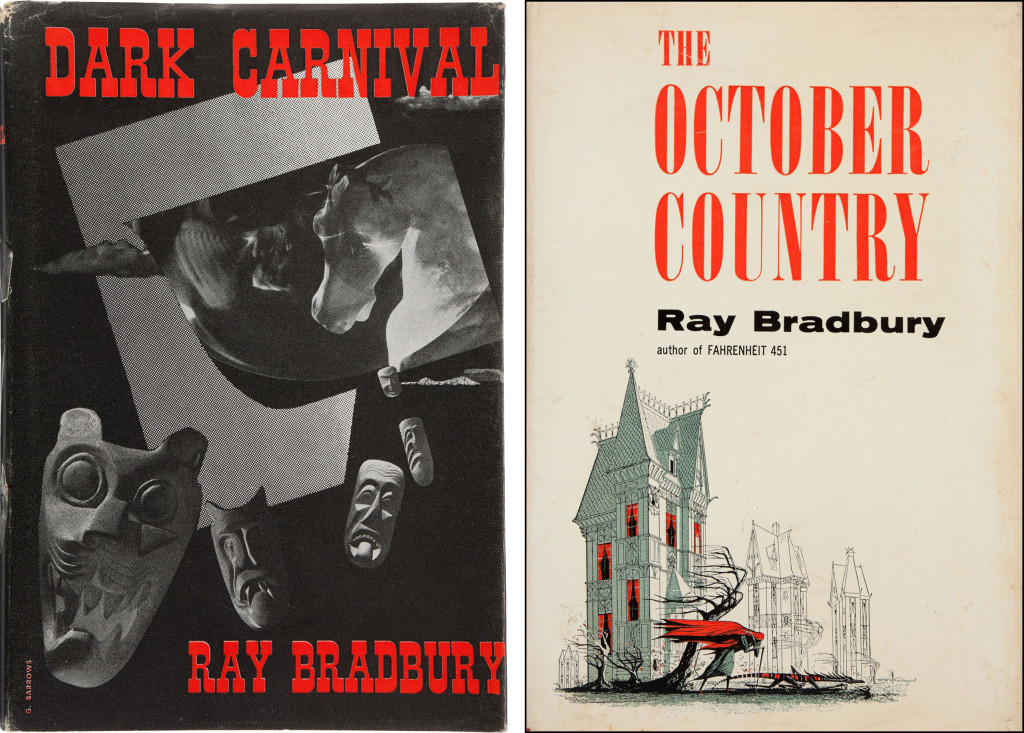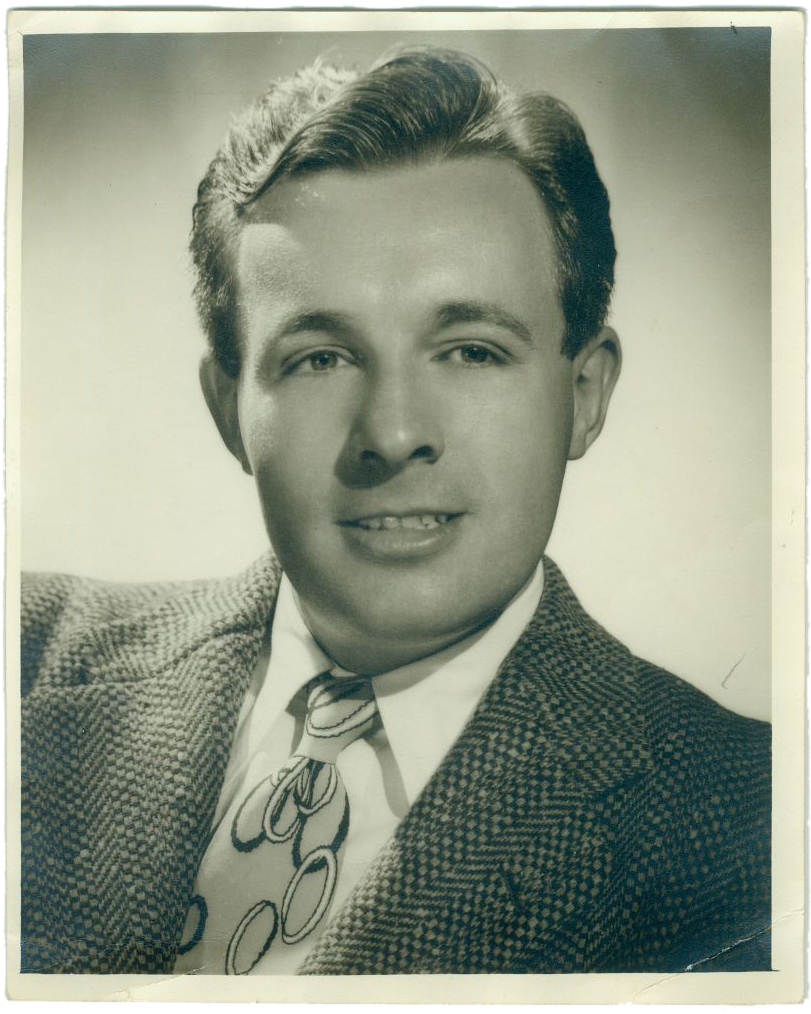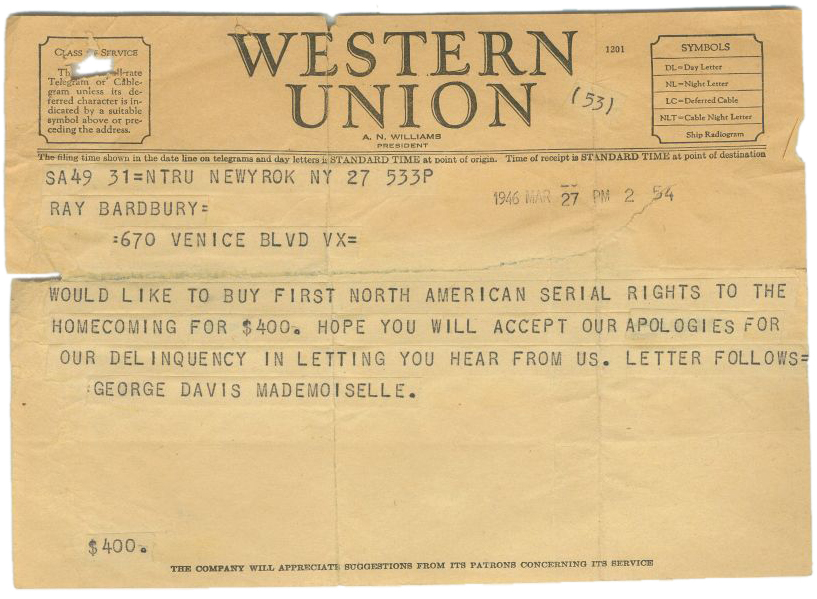【1976 Archives】
Where the Hills Are Fog976 Archivesthe Rivers Are Mist
Books
Ray Bradbury’s The October Country turns sixty.

“The Dublinersof American Gothic”—that’s how Stephen King referred to Ray Bradbury’s first book, the little-known 1947 short-story collection, Dark Carnival. There’s good reason few readers, even those well versed in Bradbury’s work, are unfamiliar with Dark Carnival: Arkham House, a small press out of Sauk City, Wisconsin, published the book in a modest run of 3,112 copies; the book went out of print just a few years later. Besides a pricey limited-edition reprint in 2001, Dark Carnivalexists as a literary apparition.
And yet many people have read some of Dark Carnivalwithout knowing it. In 1955, Ballantine Books published the now-classic collection of Bradbury’s gothic horror, The October Country, which celebrated its sixtieth anniversary on October 25, and many of the stories in the collection are reworkings of tales from Dark Carnival. When given the chance to rerelease the out-of-print collection in 1955, Bradbury seized the opportunity to revisit his first book and correct the things he deemed inadequate. (Ever the perfectionist, Bradbury was, throughout his career, often discontent with calling a book done, even after its publication.) He rewrote a number of stories, made light revisions on others, cut twelve tales altogether, and added four new ones to round out the collection. The stories Bradbury discarded he thought too weak, too violent, or too primitive, and not representative of where he was as a writer at that moment.
In the eight years between Dark Carnival andOctober Country, Bradbury’s writing advanced dramatically. In this short span, he wrote his breakthrough story cycle, The Martian Chronicles, a book that signified a start to the genre’s inclusion in mainstream literature; published the celebrated science-fiction collection The Illustrated Man; followed up with the underrated collection of mixed fiction (fantasy and contemporary realist prose), The Golden Apples of the Sun; wrote his magnum opus, Fahrenheit 451; and began work on the screenplay for Moby-Dick for director John Huston. This was, without question, Bradbury’s golden era.
The October Countryis a more refined work than its predecessor: the revised stories are stronger, more mature, and more taut, and the later collection contains a lean nineteen stories, cut down from the twenty-seven originally published in Dark Carnival. It opens with a description of Bradbury’s phantasmagoric milieu:
That country where it is always turning late in the year. That country where the hills are fog and the rivers are mist; where noons go quickly, dusks and twilights linger, and midnights stay. That country composed in the main of cellars, sub-cellars, coal-bins, closets, attics, and pantries faced away from the sun. That country whose people are autumn people, thinking only autumn thoughts. Whose people passing at night on the empty walks sound like rain.

Bradbury in a 1945 publicity photo.
The eight-year journey from Dark Carnival to The October Countryis worth noting due to the place both books hold in the pantheon of American gothic literature. Both journey into the realm of the strange and the supernatural to explore the foundational gothic avatars of isolation, madness, obsession, loneliness, melancholy, and the grotesque in a new, unpredictable, and wholly original fashion. Indeed, several of the stories Bradbury carried over from Dark Carnivalto the October Countryare, today, indisputable classics in the field of horror and the dark fantastic. “The Homecoming” is one: it subverts the genre, reversing the expected tale of horror to instead explore the touching story of a young human boy who feels like an outcast in a family of vampires. It is quintessential Bradbury, a story that moves around a central metaphor, in this case that most vexing of conundrums, adolescence. Neil Gaiman has cited “The Homecoming” as his introduction to the chimerical world of Bradbury. “It was the first time anyone had ever written a story that spoke to me personally,” Gaiman wrote in 2012, when Bradbury died.
As with many of Bradbury’s stories, the path to publication of “The Homecoming” is a narrative in itself. In late 1945 or early 1946, he submitted the story to Mademoiselleon a gamble: though “Homecoming” was a stretch for the fashion magazine,Mademoisellewas known at the time for publishing top-quality fiction, and Bradbury was just beginning to think about publishing beyond the pulp-fiction market where he had earned a following. The story landed in the magazine’s slush pile, where it eventually caught the eye of a reader in the office, another young writer who was also coming into his own, named Truman Capote. Capote had recently published the story “Miriam” in the magazine and was helping out around the editorial offices when he discovered “Homecoming.” Editor George Davis and fiction editor Rita Smith (Carson McCullers’s sister) were also keen on it and sent Bradbury (misspelled as “Bardbury”) an acceptance on March 27, 1946, via Western Union, with an offer of four hundred dollars. Davis hired New Yorkerartist Charles Addams to create a drawing to accompany the story, and Davis and Smith built the entire Halloween-themed October issue around “Homecoming.”

Another story that Bradbury carried over from Dark Carnivalto The October Countrywas a lightly revised version of “The Lake,” which he had written in 1942, at the age of twenty-two. “The Lake” was a significant breakthrough for the writer early in his career. “I realized I had at last written a really fine story,” Bradbury wrote in his 1989 book, Zen in the Art of Writing. “The first in ten years of writing. And not only was it a fine story, but it was some sort of hybrid, something verging on the new. Not a traditional ghost story at all, but a story about love, time, remembrance, and drowning.”
With “The Lake,” he had landed on another critical component to his body of work: the autobiographical fantasy. The story, Bradbury recalled, was based on a girl he had known who had drowned in Lake Michigan when he was a young boy growing up in Waukegan, Illinois. Bradbury said he carried the anguish of the experience with him for a decade until he wrote “The Lake” in a two-hour fit of inspiration. The story followed a man who returns to his boyhood Midwest town and encounters the spirit of a little girl he once knew; it is an unlikely ghost story that examines nostalgia, early love, and mortality. Even in his earliest writing, Bradbury upended the tropes of the horror genre by musing on his childhood emotional experiences through the prism of the fantastic.
Los Angeles artist Joseph Mugnaini, who had provided illustrations for the stories and the cover of The Golden Apples of the Sun, as well as the iconic cover art of the paper man aflame that appears on the first edition of Fahrenheit 451, made illustrations—sui generis pen-and-ink drawings that are mysterious and haunting—for several of the tales in The October Country, an addition that heightened the book’s tonal quality. “The custom of artist-illustrator and mythologist (which is what a good writer should be) working together,” said Bradbury, “is as old as the Greeks, Romans or name any other culture of some two-thousand-plus years ago. They are amiable cross-pollinators of one another.”
Bradbury didn’t return to gothic horror after The October Country, with the exception of his timeless tale of childhood and good and evil, Something Wicked This Way Comes, which was published in 1962, at which point he declared, “I said all I had to say in the field.” But the lasting importance of Dark Carnivaland its sibling The October Countryshow a master short-story writer expanding the boundaries of horror and supernatural fiction. Bradbury may have moved on from these genres, but Dark Carnival and The October Country have a twisted and enduring shadow that continues to captivate and frighten.
Sam Weller is the authorized biographer of Ray Bradbury and a Bram Stoker Award winner. He is an associate professor in the Department of Creative Writing at Columbia College Chicago. Follow him on Twitter.
Search
Categories
Latest Posts
Best headphones deal: Save up to 51% on Beats at Amazon
2025-06-26 11:33'Knox Goes Away' review: Michael Keaton scorches as a doomed hit man
2025-06-26 11:21FCC has finally redefined which internet speeds are 'broadband'
2025-06-26 10:51One of Android's Easter Eggs is a Flappy Bird
2025-06-26 10:25Popular Posts
'The Last of Us' Season 2, episode 4: Why Ellie sings 'Take on Me'
2025-06-26 12:20How to take a screenshot on Chromebook
2025-06-26 11:43Humane's Ai Pin is a very out
2025-06-26 11:26Amazon Pet Day: All the best deals
2025-06-26 09:48Featured Posts
FreeSync 2 Explained
2025-06-26 11:44SpaceX launched and landed a rocket that has already been to space
2025-06-26 11:41Draper vs. Arnaldi 2025 livestream: Watch Madrid Open for free
2025-06-26 10:02Popular Articles
Ireland fines TikTok $600 million for sharing user data with China
2025-06-26 12:22Why do I feel lonely when I have friends?
2025-06-26 12:09Pornhub just banned Texas. Here's why.
2025-06-26 11:21Starbucks is shutting down its NFT rewards program
2025-06-26 11:09Best IPL deal: Save $80 on Braun IPL Silk·Expert
2025-06-26 10:58Newsletter
Subscribe to our newsletter for the latest updates.
Comments (9751)
Prosperous Times Information Network
Better Buy: Previous
2025-06-26 11:33Miracle Information Network
Black Mirror season 7 is coming — 5 things the internet is saying about its return
2025-06-26 11:29Image Information Network
It's like ChatGPT with a body: Watch creepy demo of OpenAI
2025-06-26 11:28Unobstructed Information Network
Trump grades his Puerto Rico hurricane response a '10'
2025-06-26 10:29Co-creation Information Network
Draper vs. Arnaldi 2025 livestream: Watch Madrid Open for free
2025-06-26 10:19